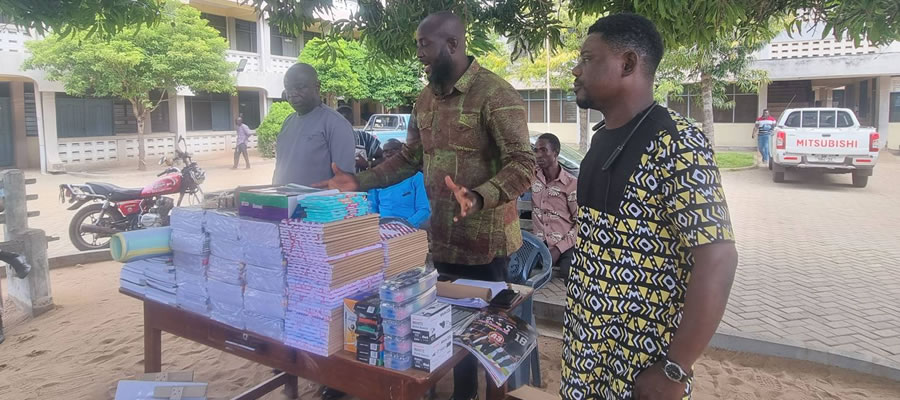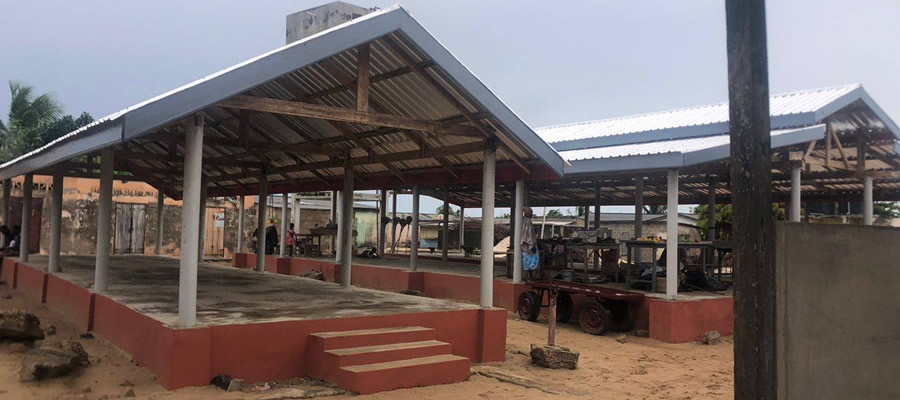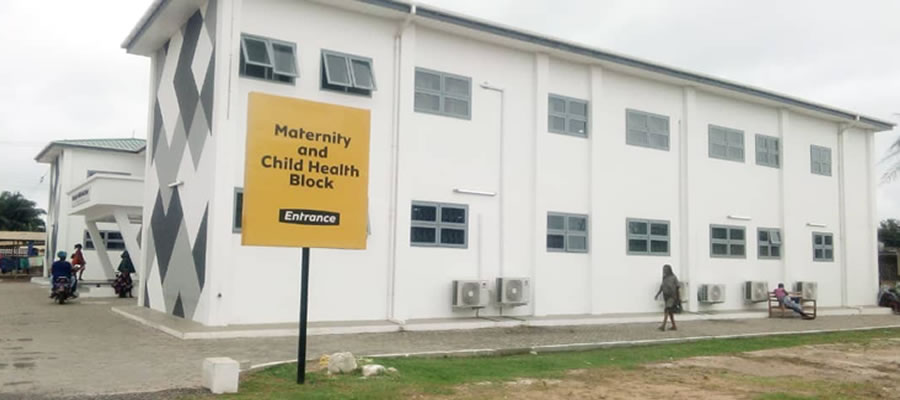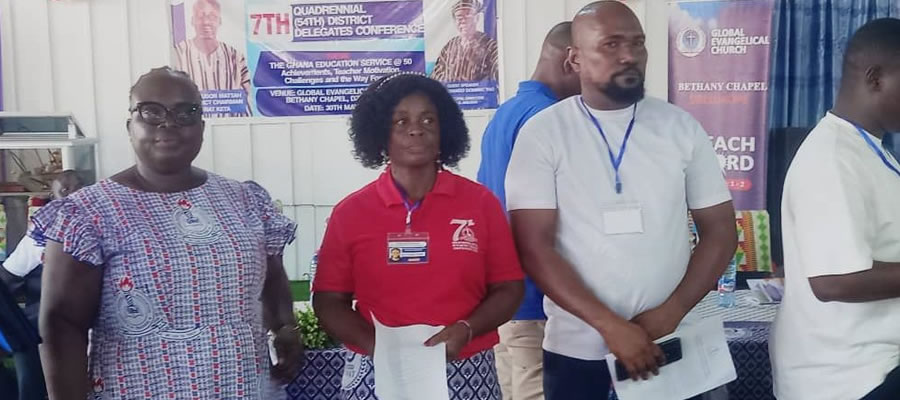

The Volta Region Community Water and Sanitation Programme Started in the Keta Municipal in the year 1996. The programme had a target of serving 49% of the rural communities in the region with potable and accessible drinking water. The first phase of the programme ended in December 2002.
The second phase of the programme now called the District Based Water and Sanitation Component Phase II began in 2003 and is expected to phase out in December 2009.
The overall objectives of the programme are:-
1. To bring water supply and sanitation services in rural communities and small towns up to basic acceptable levels.
2. To ensure sustainability of the services.
3. To promote the best use of the services so as to realize their potential benefits.
The main strategies of the programme are:-
1. Community participation.
2. Demand driven approach to the utilization of funds under the programme
3. Community management concept
4. Private sector participation in implementing the programme
5. Municipal Assembly’s involvement.
6. Community Water and Sanitation Agency as facilitators.
As a situational analysis, the underlisted water and sanitation facilities have been provided under the programme: -
Latrines
The beneficiary communities are:
Anlo Afiadenyigba water supply scheme, which serves ten (10) communities. The system is operated and managed by a trained Water and Sanitation Development Board (WSDB). The system has 44 stand posts (or standpipes).
Aborlove-Nolopi Solar supply water scheme, which serves the two communities with 14 stand posts and a few household connections. This system is also operated and managed by WSBD duly trained by the CWSA.
Sasieme water supply system. This is also one of the systems provided by the programme and operated and managed by committee trained under the same programme.
Horvi-Havedzi water supply scheme. These two communitiesbenefited from a system designed to serve seven communities in the Ketu District and the two in the Keta Municipal. The project is called the Coastal Belt Water Supply scheme.
GWCL water supply scheme have also been extended to three communities under the programme.
Ferro Cement Tanks A total of twenty three (23) Rain Harvesting Tanks have been Constructed under the programme so far for eleven (11) institutions in the Municipality.
Existing Water Situation; opportunities and challenges
The major sources of drinking water currently in use in the district are pipe borne (GWCL), Mechanized boreholes; Boreholes with Hand pump, traditional hand dug wells, rain harvesting, stream etc. The current (year 2005) water coverage for the entire district is 42%. The table and the chart below show the existing water coverage by area council. There are fourteen area councils with three area council having 100% water coverage. These are Anlo Afiadenyigba, Kome and Whuti area Councils. The remaining eleven area councils have been partially covered as shown in the table below.
Opportunities
1. Possibility of extension of pipe-borne water to some communities
2. Possibility of rehabilitating and expanding the Tsiame and Anyako Water supply systems.
3. Possibility of exploiting subsurface water for Hand dug well in small communities.
4. Availability of NGO’s/Donors like DANIDA and DFID.
5. Availability of District Assembly common Fund.
Challenges
1. Highly saline groundwater
2. Uneven distribution of rainfall pattern.
3. Most communities are far from GWCL main lines.
4. Availability of only high cost options of water facilities.
The rather saline nature of groundwater has made it very difficult to access low cost options of water facilities. There exist only 14 boreholes of which 5 are low yielding, and only one hand dug well with pump in the District. Thus the prevailing condition does not favour the provision of boreholes in this plan. The plan however makes provision for the extension of the existing GWCL System and the rehabilitation of 2 Water supply systems.
Existing Sanitation Situation; opportunities and challenges
The current (year 2005) sanitation facilities coverage for the District is 40%. The sanitation facilities commonly in use are: Water Closets, Institutional KVIPs, Communal Septic Tank Latrines, VIP (Household) latrine, communal pit latrines, pan latrines and free range (bush).
Although the soil stability does not favour the construction of unlined latrines, VRCWSP/DANIDA has supported the construction of few lined types of latrines between years 1996 – 2005. The sanitation facility coverage by area council is as show in the table and chart below.
Opportunities
1. Possibility of construction of some low cost options in certain areas.
2. Willingness of community members to construct household latrines.
3. Willingness of District Assembly to support.
4. Willingness of DANIDA to support
Challenges
1. High cost of latrine.
2. Unstable ground formation.
3. Many people use free range
4. Few people own household latrines.
5. Communal latrines are not properly maintained.
Communal Latrine:
The construction of communal latrine has been the responsibility of the District Assembly and the communities. Since there are no planned policies on it, these latrines are built with no emphasis on operation and maintenance (O & M). Inadequate education was given to the communities on ownership and management hence no effective O & M of the facilities. It is hoped that by the completion of this DWSP effective polices and guidelines would be put in place to address these problems. Fig. 2.3.2 in the pdf file shows the map of Keta Municipal with existing water and sanitation facilities.
These facilities have gone a long way to improve health and sanitation in the Municipality . It must be emphasized however that observations made by DPCU during the health and environmental sanitation survey in December, 2000 indicate that water supply and sanitation facilities are still not adequate judging from open defecation along beaches, lagoon sides, open spaces, in the bush and discharge of liquid and solid waste indiscriminately. It is hoped that the second phase of the DANIDA Project, which ended in 2002, would go a long away to reduce some of these problems.
Access to water and toilet facilities:-
Keta Municipal Assembly, Ministry of Health, DANIDA, Ghana Water Company, Ministry of Local Government and Rural Development,
Department of Game and Wildlife have done a lot to improve environmental sanitation for the past five years through various projects in the Municipality.
DPCU found out during an environmental health and sanitation survey in December, 2000 however that a lot more needs to be done in order to bring the environmental health and sanitation status of the district to acceptable standards in terms of access to potable water supply, provision of adequate toilet facilities and solid and liquid waste disposal.
For example though about 60% of households use pipe-borne as their source of water supply less than 25% of such households has such water within their compounds/homes. The use of boreholes and wells/dug-outs streams/rivers is also common. About 27.3% use wells/dug-outs with 6% using streams/rivers as their sources of water supply.
The tendency of drinking polluted water is therefore high considering the fact that most residents have no access to acceptable toilet facilities. Though the water supply situation in the Munuicipality has improved considerably since 1996, a lot more needs to be done through the distribution of treated water to as many communities and homes as possible in order to reduce the consumption of water of doubtful quality in the Municipality.
The situation in 2000 has improved considerably since 1996 but the current situation still confirms SPRING finding in 1996 when it was said that many people in the Municipality“use water from shallow wells and streams”. This implies that a large proportion of the respondents are likely to depend on unsafe water sources. This may be as a result of crude water collecting methods used and uncovered wells which are open to contamination”. The recent outbreak of Cholera in the municipality leading to 90 reported cases people confirms this.
Date Created : 11/21/2017 4:36:00 AM










 facebook
facebook
 twitter
twitter
 Youtube
Youtube
 +233 593 831 280
+233 593 831 280 0800 430 430
0800 430 430 GPS: GE-231-4383
GPS: GE-231-4383 info@ghanadistricts.com
info@ghanadistricts.com Box GP1044, Accra, Ghana
Box GP1044, Accra, Ghana